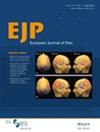Pain-related impairment in daily activities after lung cancer surgery: A 1-year prospective cohort study
Abstract
Background
Persistent postsurgical pain (PPSP) following thoracic surgery affects 40%–60% of patients undergoing lung resection due to malignancies. Postoperative pain-related symptoms are common, leading to limitations in activities of daily living (ADL) and deterioration in physical function, which significantly impacts quality of life. Pain-related limitations are of interest, as postsurgical pain may present as a target for intervention to improve postoperative rehabilitation. This study aimed to evaluate the association between PPSP and ADL limitations during the first 12 postoperative months after surgery for lung cancer.
Methods
A total of 124 patients undergoing surgery for lung cancer were followed for 12 months. Every 2 months, participants reported ADL limitations attributed to PPSP. Cumulative pain impairment scores were calculated from reported limitations in 14 daily activities, and recovery trajectory patterns were analysed.
Results
Daily activities most affected by PPSP were carrying bags, arm elevation, climbing stairs, cleaning floors and coughing, with >50% reporting limitations across all assessment times. Reported pain intensities were generally mild (NRS≤3), but still associated with significant impairment. Some recovery was observed in patients reporting pain at rest, but PPSP was consistently associated with higher cumulative pain impairment scores at all assessments during the 12-month follow-up period.
Conclusions
Findings indicate that persistent postsurgical pain, even of mild intensity, is associated with significant limitations in daily activities up to 12 months post-surgery. Some improvement in pain-related impairment was observed, although limitations remained significantly higher in patients reporting persistent postsurgical pain, as compared to pain-free patients.
Significance
Surgery remains a cornerstone in the treatment of early-stage lung cancer. Despite advances in minimally invasive techniques and rehabilitation, persisting postsurgical pain and pain-related limitations in daily activities may endure. This study investigated specifically the pain-related limitations in activities of daily living and described recovery trajectories during the first 12 postoperative months. Patients with persistent postsurgical pain experienced multiple limitations compared to pain-free patients. Although partial recovery was observed, impairments remained significant for up to 12 months after surgery.


 求助内容:
求助内容: 应助结果提醒方式:
应助结果提醒方式:


